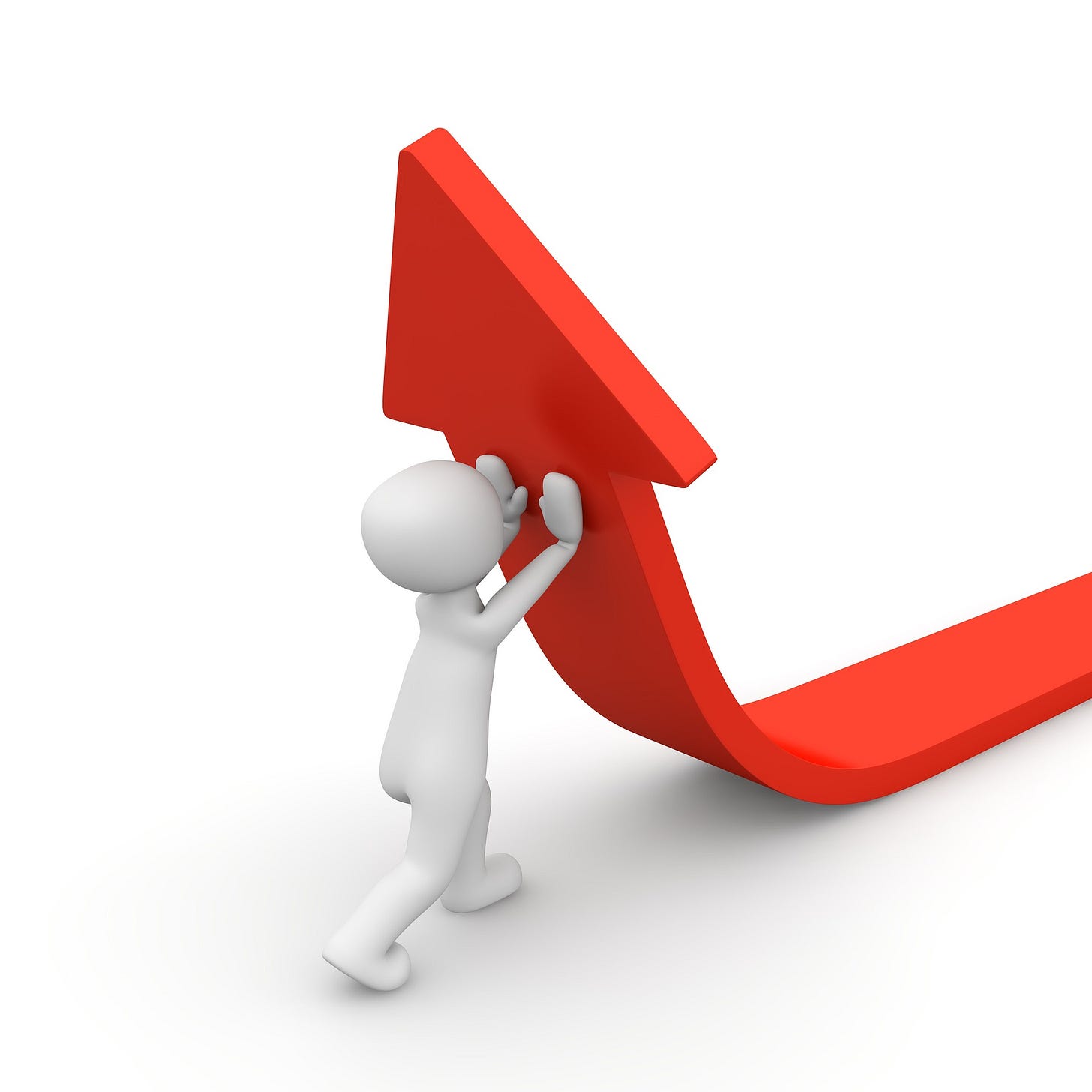Everything You Need To Know About Market Indicators
Breadth Index, Volume of Transactions, Confidence Index, Relative Strength Analysis & Odd - Lot Theory
What is Market Indicator ?
A market indicator is a quantitative tool that is used by traders to interpret financial data in order to forecast stock market movements. Market indicators are considered a subset of technical indicators, but the two share fundamental differences. Market indicators are calculated in the same way as technical indicators, which is by applying statistical formulas to a set of data points in order to derive ratios or formulas.
You can also read related article - 5 Must Do's for Financial Freedom
What are different Market Indicators ?
Lets take dip dive in various different Market Indicators.
1. Breadth Index:
It is an index that covers all securities traded.
It is computed by dividing the net advances or declines in the market by the number of issues traded.
The breadth index either supports or contradicts the movement of the Dow Jones Averages.
If it supports the movement of the Dow Jones Averages, this is considered sign of technical strength and if it does not support the averages, it is a sign of technical weakness i.e. a sign that the market will move in a direction opposite to the Dow Jones Averages.
Let us consider for example a stock market where 450 shares are listed. In one session, the prices of 290 shares rose and the prices of 160 shares fell. The ABI would thus result as: (290-160)/450 = 0.29 or 29%.
𝐀𝐁𝐈 = (𝐍𝐨. 𝐨𝐟 𝐀𝐝𝐯𝐚𝐧𝐜𝐢𝐧𝐠 𝐒𝐭𝐨𝐜𝐤𝐬 − 𝐍𝐨. 𝐨𝐟 𝐃𝐞𝐜𝐥𝐢𝐧𝐢𝐧𝐠 𝐒𝐭𝐨𝐜𝐤𝐬) /𝐓𝐨𝐭𝐚𝐥 𝐈𝐬𝐬𝐮𝐞𝐬 𝐓𝐫𝐚𝐝𝐞𝐝
Total Issues Traded= Advancing Stocks + Declining Stocks + Stocks
We can summaries Breadth Index as a Market Indicator which indicates volatility in market based on Advance & Decline in the market with respect to the number of issues traded.
2. Volume of Transactions:
The volume of shares traded in the market provides useful clues on how the market would behave in the near future.
Volume is an important characteristic that is included at the bottom of many charts; Volume is used to assess the strength or conviction of buyers and sellers in determining a security’s price.
Some technicians consider volume information to be crucial. If volume increases during a time frame in which price is also increasing, that combination is considered positive and the two indicators are said to “confirm” each other. The signal would be interpreted to mean that over time, more and more investors are buying the financial instrument and they are doing so at higher and higher prices. This pattern is considered a positive technical development.
Conversely, if volume and price diverge—for example, if a stock’s price rises while its volume declines—the implication is that fewer and fewer market participants are willing to buy that stock at the new price. If this trend in volume continues, the price rally will soon end because demand for the security at higher prices will cease.
Thus, the volume concept is best used with another market indicator, such as the Dow Theory
We can summaries volume as a Market Indicator which indicates the total amount of strength as well as weakness in security.
You can also read related article - 5 Must Do's for Financial Freedom
3. Confidence Index:
The Barron's Confidence Index is a ratio to calculate investors desire to assume additional risk during investment.
The ratio is the average yield-to-maturity of Barron's Best Grade bond list to average yield-to-maturity of its Intermediate Grade bond list.
𝐂𝐨𝐧𝐟𝐢𝐝𝐞𝐧𝐜𝐞 𝐈𝐧𝐝𝐞𝐱 = 𝐀𝐯𝐠 𝐘𝐓𝐌 (𝐁𝐞𝐬𝐭 𝐆𝐫𝐚𝐝𝐞 𝐁𝐨𝐧𝐝𝐬) /𝐀𝐯𝐠 𝐘𝐓𝐌 (𝐈𝐧𝐭𝐞𝐫𝐦𝐞𝐝𝐢𝐚𝐭𝐞 𝐆𝐫𝐚𝐝𝐞 𝐁𝐨𝐧𝐝𝐬)
To arrive at the value, Barron's will divide average yield-to-maturity (YTM) of Barron's Best Grade bond list by the average yield-to-maturity of its Intermediate Grade bond list.
The basis of the Barron’s Confidence Index is on the theory that if investors are optimistic they are more likely to invest in riskier bonds, driving yields downwards and the index upwards.
A rising confidence index is expected to precede a rising stock market, and a fall in the index is expected to precede a drop in stock prices.
For example, if the average yield of the ten high-grade bonds is 4.5 percent and the average yield of the intermediate-grade bonds is 5 percent, the Barron’s Confidence Index is 90 percent (4.5 percent divided by 5 percent and multiplied by 100).
When investors are confident about the economy’s future, they are willing to take more risk and buy more speculative bonds. The price of higher-quality bonds then goes down, which increases their yield. This dynamic indicates investors need lower premiums in returns to take on increased risk.
An index around 80 percent is considered a bearish outlook for the stock market. When confidence in the economy is low, investors seek higher quality debt, which increases bond prices and lowers yields.
While the raw index number is meaningful, it’s also useful to track its direction. A falling confidence number indicates decreasing confidence in the market; a rising value, of course, means increasing confidence.
The confidence index is usually, but not always a leading indicator of the market. Therefore, it should be used in conjunction with other market indicators.
We can summaries Confidence Index as a Market Indicator which indicates volatility in market based on Investors risk appetite in the market with respect to the yield of the bonds.
4. Relative Strength Index:
Relative strength creates a point of comparison regarding the performance of a particular security (e.g. Reliance Industries Limited Stock) against the performance of a selected benchmark, such as a market index (e.g. Sensex, Nifty) as well as to other similar securities.
The relative strength concept suggests that the prices of some securities rise relatively faster in a bull market or decline more slowly in a bear market than other securities i.e. some securities exhibit relative strength.
Investors will earn higher returns by investing in securities which have demonstrated relative strength in the past because the relative strength of a security tends to remain undiminished over time.
Further, investors can apply relative strength trading to more than stocks and mutual funds, but also asset classes, ETFs, fixed income, commodities, sectors and other areas of the market.
Calculating Relative Strength
There is more than one way to calculate an investment's relative strength.
One method is to rank all investments within the same investment universe, such as tech stocks or mutual funds, and purchase the top performers.
Another is to take the rate of change in a stock’s price, recorded over a specified period of time, and divide it by the rate of change in a relevant index over the same time period. The stock’s rate of change is divided by the benchmark's rate of change to get a relative strength value. If the value is greater than one, the investment is relatively strong; if the value is less than one, the investment is relatively weak.
𝐑𝐒𝐈 = % 𝐂𝐡𝐚𝐧𝐠𝐞 𝐢𝐧 𝐒𝐭𝐨𝐜𝐤 𝐩𝐫𝐢𝐜𝐞 / % 𝐂𝐡𝐚𝐧𝐠𝐞 𝐢𝐧 𝐈𝐧𝐝𝐞𝐱
For mutual funds, the rate of change within the NAV of a specified fund is calculated over a specified time period and compared to that of other mutual funds.
We can summaries Relative strength as a Market Indicator which indicates volatility in market based on change in Security price in the market with respect to the change in Index.
You can also read related article - 5 Must Do's for Financial Freedom
5. Odd - Lot Theory:
Odd lot trades are trade orders made by investors that include less than 100 shares in the transaction or are not a multiple of 100. These trade orders generally encompass individual investors which the theory believes are less educated and influential in the market overall.
The odd lot theory uses the analysis of odd lot trades as its basis. It primarily focuses on trade orders of less than 100 shares (100 shares is called a round lot). Its premise is built on the notion that odd lot trades can be counterintuitive to market trends. Therefore, believers in the odd lot theory seek to trade against the direction of odd lot trades. Thus, when odd lotteries are buying shares the theory would indicate a signal to sell shares and vice versa.
Analysis of the odd lot theory, culminating in the 1990s, generally disproved its effectiveness. Discovering that individual investors are not generally prone to making bad investing decisions.
Bottomline
The Market Indicator is data driven tool to forecast market. The most used Market Indicators are Breadth Index, Volume of Transactions, Confidence Index, Relative Strength Analysis & Odd - Lot Theory. Each Market Indicator is different and used by various investor based on experience and date points.




